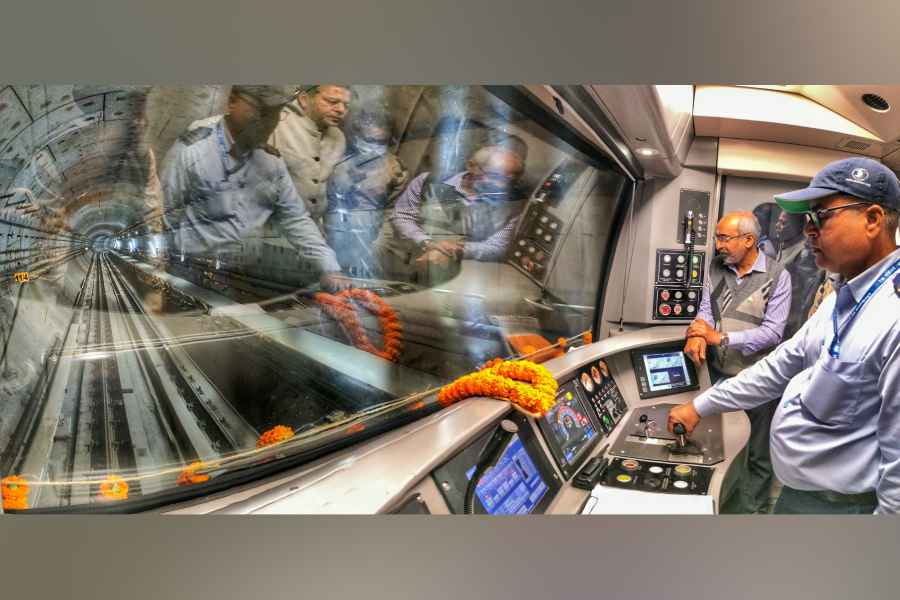The furore over the whitewashing of the floral motifs of the beautiful Jaipuri murals that covered the walls of the Government College of Art & Craft in Calcutta shows no signs of abatement.
The murals gave the walls a rich brocaded appearance.
In another development, students of the college started a rally around 2pm on Tuesday shouting slogans and demanding the appointment of a teacher of Indian painting and a librarian.
Principal Chhatrapati Dutta, a former student of the institution, advised them to have a direct dialogue with Nimai Chandra Saha, Bengal government’s director of public instructions.
On Wednesday, 24 students will visit Bikash Bhavan, the state education directorate, to place their demands with copies of the correspondence over the past two years.
If that fails, they will start a sit-in in front of Bikash Bhavan from Thursday, said Yubraj Munshi, the general secretary of the non-political Parampara Students Union 2024-25 of the art college.
The Government College of Art & Craft is one of the oldest art colleges in India. It was founded on August 16, 1854, at Garanhata, Chitpur, in north Calcutta. Some of India’s leading artists are its products.
The students had gheraoed Dutta and a few faculty members around 4.30pm on Monday. It was lifted at 9.45pm.
Munshi said on Tuesday evening that their two main demands were the appointment of a teacher for the Indian painting department and a librarian.
The library has remained closed for two years.
Indian painting has been the college’s speciality since the times of Ernest Binfield Havell (1861-1934), the principal who encouraged a more indigenous and Indian process of training students that went against the prevailing Western academic model.
He had appointed Abanindranath Tagore (1871-1951) vice-principal to nurture the Indian style of art.
On Monday, Dutta called Munshi, and in the presence of student representatives, they had a dialogue with Arindam Dasgupta, the joint director of public instructions in the state government.
Munshi said Dasgupta told them he had forwarded the file to the education minister. Dutta, the general secretary of the students union said, gave the students in writing that steps would be taken to find a solution.
Dutta said that ever since he joined as principal in 2017, he has been trying to meet the legitimate demands of students but failed. “The students’ agitation is justified. They should have done it earlier,” Dutta asserted.
Ganesh Haloi, both a former student and teacher, holds that the whitewashed Jaipuri murals go back to the times of Havell and Abanindranath.
Rajasthani wall painters had been hired to do the job, says the 88-year-old master.
The murals had been whitewashed during the Durga Puja holidays. Dutta said he had received funds of nearly ₹1 crore to undertake repairs to the building.
The foundation of the building was sinking because a wooden verandah had been replaced with a concrete one.
When the murals were last restored in 2007-2008, they were coated with varnish. Layers were peeling off and to stop that the PWD had whitewashed it “without the consent of the college”, Dutta said.
“Now efforts are being made to remove as much of the whitewash as possible,” said Dutta.
Sanjay Dhar and Anupam Sah, leading conservators, said the process is reversible provided the walls are not sandpapered. Sah said the murals were a “unique thing for Calcutta”.











